
Rebuilding Märklin 3417, NSB 63a 2770, to digital with Märklin conversion set 60901 and mfx sound decoder 60931
Updated 06.06.2013
Märklin 3417, NSB 63a 2770
During the second world war the Germans brought 74 of their Br 52 to
Norway. When the war ended, the locomotives remained in Norway and was
used by NSB. This was a very valuable addition to the existing locomotive
park, and gave NSB more time to supply new Diesel locomotives. The last
NSB series 63a retired November 9th 1970.

Preparations for the conversion:
I always start by removing everything; the reversing unit (in the tender), the
motor and all the wiring, including the wires to the front lamp and smoke
generator contact tongue.
Normally I separate the locomotive and the tender during the conversion.
It should not be necessary in this case.
Make sure that all the mechanical parts, like
the gears, axels, rods and other moving or rotating parts works perfect before
starting to install the new parts, in the following sequence:
1. new motor
2. decoder with the wiring and speaker
3. cabin light
Motor:
The motor parts from the Märklin conversion sets 6090, 60901, 60921 and 60760
may be used. Basically, only the decoders are different in these sets.
The new motor set 60941 suits perfect.
In this case the conversion set choise doesn't matter, as a separate mfx sound decoder, Märklin 60931, is
used. Installation of the motor itself is very simple. After removing the
old motor, make sure that the mechanical parts are clean and work perfect.
Axels, rods and gears must rotate smoothly. If necessary, oil the moving
parts very carefully. After installing the new motor, without the brushes,
check again that it all rotates perfectly. Then install the two brushes.
The below photo also shows the orange and brown/green wire to the interior light
connector.
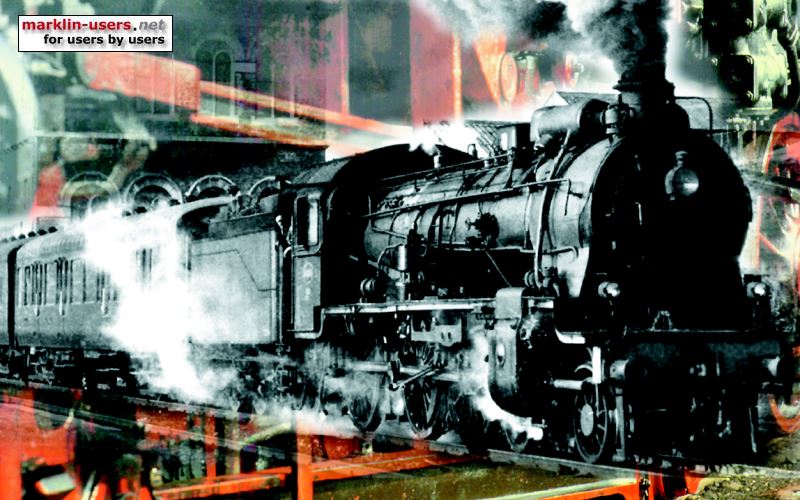
Decoder and speaker:
I stripped the decoder for it's rubber cover and glued it with a green
detachable stuff to a decoder holder, Märklin part number 258820. This
holder fits in the tender tub. I glued the two noise suppressors for the
motor in the bottom of the tub, under the decoder holder. The orange wire
from the decoder is soldered to a distribution pcb (Printed Circuit Board) glued
to the RH inside of the tender tub. The orange wire is distributed to the
rear lamp, the front lamp and to the connector for the interior light in the
locomotive. Also the brown ground wire has a distribution point on the pcb.
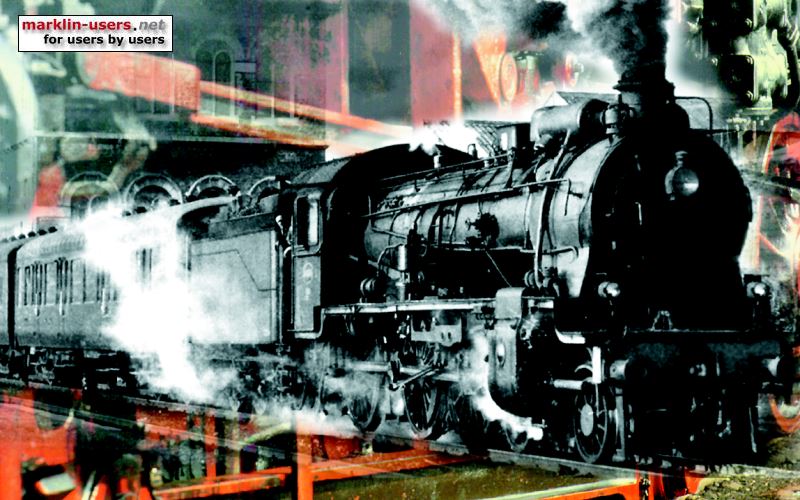
The speaker is installed where the cylinder shaped weights used to be. By cutting off most of the centre divider and filing off a little bit of the speaker plastic house, it was possible to press fit the speaker house into the coal box.
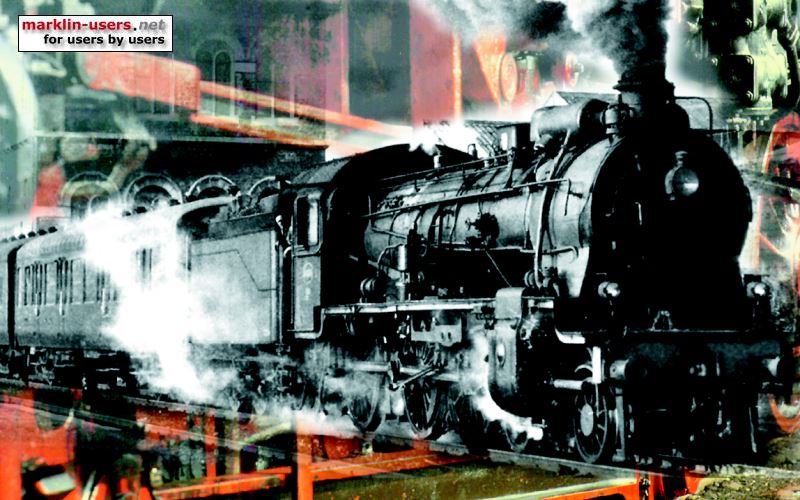
The decoder functions:
See below table.
Front light and steam generator:
The grey wire from the decoder goes all the way forwards to the front lamp, with
an orange wire. These wires are soldered to the lamp holder. Also
the brown/red wire for function f1 goes all the way forwards, soldered to the
contact tongue for the steam generator.
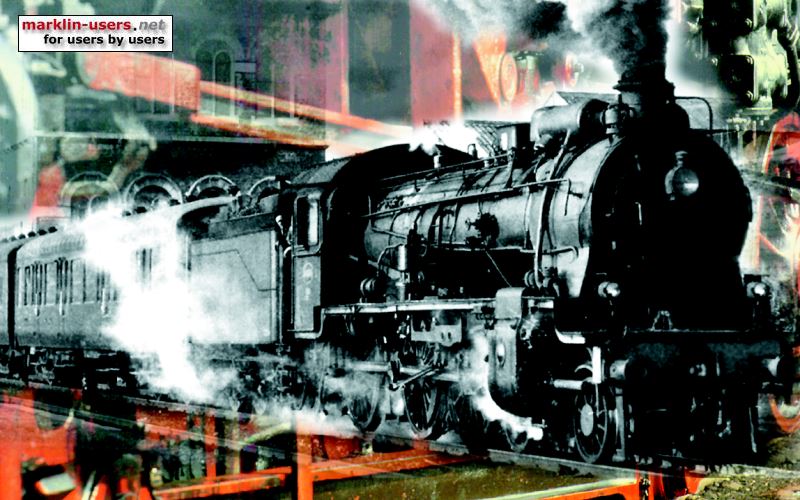
Tender weights:
To keep the good running performance, I had to put the removed weights back in
the tender. I fixed them together with insulating tape and just put it on
top of the rear lamp. It is held into position by the rear wall and the
lateral divider.
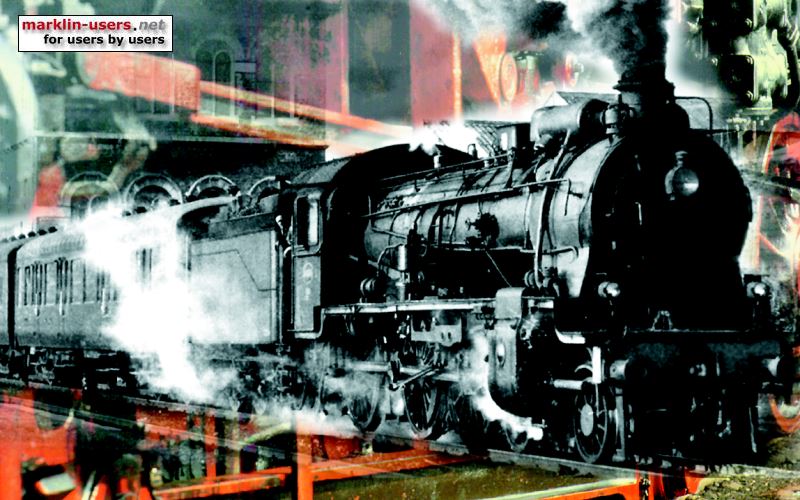
Interior light in driver's cabin:
A small 28 volt T1 bulb is glued to the rear end of the driver's cabin ceiling,
indicated by the gray arrow. The wires go through a slot in the RH side of the
driver's cabin. The connector is glued to the locomotive body. A 330 Ohm
resistor is soldered to the connector, to reduce the voltage to the bulb, to
reduce the light intensity.
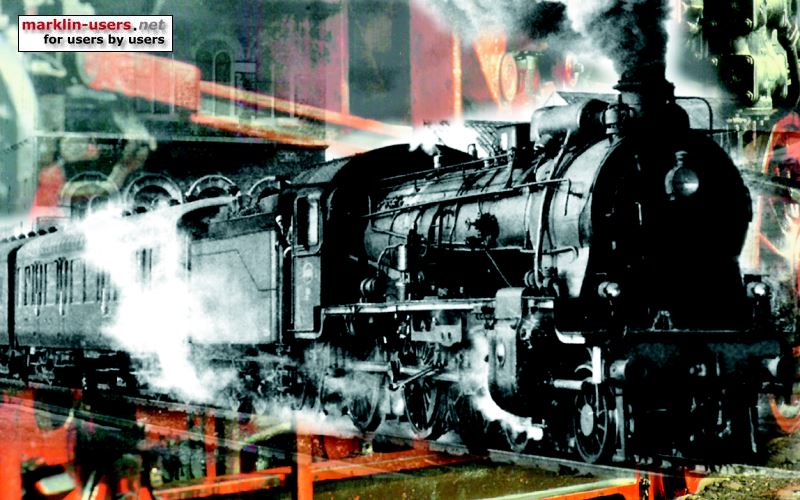
My setting of the decoder:
| Decoder settings, 3417 | Default | Mine | |
|---|---|---|---|
| Analogue settings: | |||
| Enable analogue mode | check | < | |
| Starting voltage | 7,300 | < | |
| Maximum voltage | 23,000 | < | |
| Control settings : | |||
| Swap directions | uncheck | < | |
| Max. speed | 255 | 80 | |
| Min. speed | 4,000 | < | |
| Acc. time | 7,000 | 20,000 | |
| Dec. time | 3,750 | 20,000 | |
| Forward trim | 1,000 | < | |
| Reverse trim | 1,000 | < | |
| Motor settings: | |||
| Motor PWM-frequency: | |||
| Low frequency | uncheck | < | |
| High frequency | check | < | |
| Load Control: | |||
| Reference parameter | 11,300 | < | |
| Control parameter K | 60 | < | |
| Control parameter I | 120 | < | |
| Control influence | 255 | < | |
| Special options: | |||
| Preserve direction | check | < | |
| Persistent acceleration | uncheck | < | |
| Persistent speed | check | < | |
| Persistent functions | check | < | |
| Sound settings: | |||
| Volume | 255 | 155 | |
| Driving Sound Rate: | |||
| At min. speed | 1,000 | < | |
| At max. speed | 1,512 | < | |
| Random Sound: | |||
| Min. gap | 30 | 15 | |
| Max. gap | 50 | < | |
| Braking Sound Threshold | 14 | 18 | |
My Märklin 3417 NSB 63 2770 decoder functions:
| 3417 NSB 63a 2770 | |||||||||||||||||||
|---|---|---|---|---|---|---|---|---|---|---|---|---|---|---|---|---|---|---|---|
| mfx 60931 | Light | Smoke unit |
Light driver |
Drive sounds |
Shunt speed |
Flute |
Bell | Air pump |
Acc/ dec |
Brake sound |
Steam release |
Coal shuffle |
Rocking grate |
Injector sound | |||||
| funct. | dir. | front | rear | short | long | 1 | 2 | 3 | |||||||||||
| f0 | forward | 3 | |||||||||||||||||
| reverse | 2 | ||||||||||||||||||
| f1 | both | on | |||||||||||||||||
| f2 | both | on | |||||||||||||||||
| f3 | both | on | |||||||||||||||||
| f4 | both | on | |||||||||||||||||
| f5 | both | on | |||||||||||||||||
| f6 | both | on | |||||||||||||||||
| f7 | both | on | |||||||||||||||||
| f8 | both | on | |||||||||||||||||
| f9 | both | on | |||||||||||||||||
| f10 | both | on | |||||||||||||||||
| f11 | both | delay off | off | ||||||||||||||||
| f12 | both | on | |||||||||||||||||
| f13 | both | on | |||||||||||||||||
| f14 | both | on | |||||||||||||||||
| f15 | both | on | |||||||||||||||||
| Stop | forward | ||||||||||||||||||
| reverse | on | ||||||||||||||||||
| Drive | forward | ||||||||||||||||||
| reverse | on | ||||||||||||||||||
Screenshot from my Central Station 1:
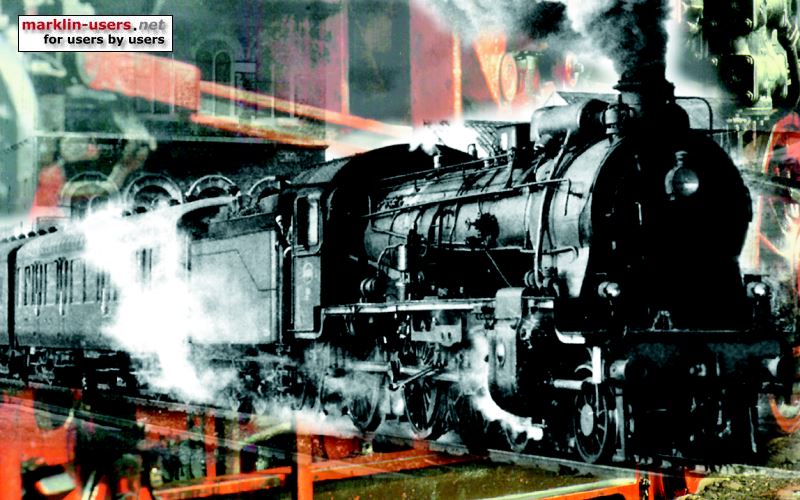
To the left Märklin 3417 NSB 63a 2770, to the right Märklin 37158 NSB 63a
2843 with original mfx sound decoder
Some prototype information about the DR Br 52, from Wikipedia
| Number(s): | see Wikipedia text |
| Quantity: | More than 7000 |
| Manufacturer: | see Wikipedia text |
| Year(s) of manufacture: | 1942 - ca. 1950 |
| Retired: | ČSD: 1976 DB: 1962 DR: 1988 NSB: 1970 ÖBB: 1976 |
| Axle arrangement: | 1'E h2 |
| Type: | G 56.15 |
| Gauge: | 1,435 mm |
| Length over buffers: | 22.975 m 27.532 m (with condensing tender) |
| Overall wheelbase: | 9.2 m |
| Service weight: | 84.0 t |
| Service weight incl. tender: | 102.7 t |
| Adhesive weight: | 75.9 t |
| Top speed: | 80 km/h |
| Indicated Power: | 1,192 kW (1,621 ps) |
| Driving wheel diameter: | 1.4 m |
| Leading wheel diameter: | 0.85 m |
| No. of cylinders: | 2 |
| Cylinder bore: | 600 mm |
| Piston stroke: | 660 mm |
| Boiler Overpressure: | 16 bar (1.6 MPa) |
| Grate area: | 3.89 m2 |
| Evaporative heating area: | 177.83 m2 |
| Tender service weight: | 18.7 t |
| Water capacity: | 27,000 l ÖBB covered tender = 30,000 l |
| Fuel: | 10.0 t |
| Train heating: | Steam |